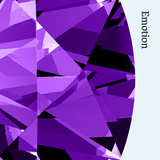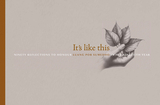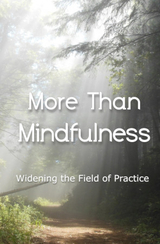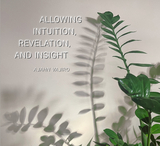










[...] Beth Steff has been practising at the monasteries associated with the traditions of Ajahn Chah in the West now for many years. She spent six years with us at Abhayagiri Buddhist Monastery in California, USA. After returning to her home country of New Zealand, Beth was feeling inspired by the examples of living a life of mindfulness that she experienced in the monasteries and wanted to share that with others.
She then started compiling talks by some of the different teachers in the western branches of the Ajahn Chah monasteries. The result is this book, which hopes to convey the techniques and benefits of different perspectives of applying Buddhist practice in our day-to-day life. Hopefully, it will expand the reader’s focus to further understand and integrate the way of practice that the Buddha laid down and give people the opportunity to appreciate how this path of integrity, clarity and discernment works to free the human heart from its entanglements.



On the occasion of my 60th birthday, I received some requests from the monastic Sangha and the lay supporters of Buddha Bodhivana Monastery who wished to know more about my life and practice as a monk. In response, it seems like a good idea to commit some of my various recollections to paper before they become lost through the passage of time. This book includes some of my personal recollections and insights from my life in the robes, rather than providing lengthy explanations of the Buddha’s teachings. The language used is simple and without too much reference to many of the Pali technical terms that we use daily as we talk about the Buddha’s teachings.

A GUIDE TO STANDING MEDITATION
As standing is something that we do, why not do it with full awareness? After all, standing was one of the positions that the Buddha recommended as a proper basis for mindfulness. Wisely cultivated, it takes strain out of the body, encourages balance and inner stability – and is a support for full liberation.
In this guide, Ajahn Sucitto adds practical details to the establishment and development of this practice. It is for beginners and experienced meditators alike.

This little collection was never intended as a ‘collection of teachings.’ It came about in response to a request and a suggestion. The request was from Sarah Wallis who wanted to sponsor a publication in celebration of her sixtieth birthday, and to mark thirty years of the Banbury Buddhist Group. The suggestion, also from Sarah, was to gather together the reflections that had been individually prepared for the twice-yearly editions of our Milntuim Hermitage Newsletter.
It was a surprise to find that there are twenty of these – and even more of a surprise to find that the reflections are all quite different. Every time I wrote a reflection, my intention was to offer encouragement for practice with the prevailing conditions; it seemed to me that it was always the same Dhamma1 practice that I pointed to. However, what I had failed to appreciate was that the actual conditions were different each time!
So, after an initial hesitation, I asked some of my monastic and lay friends to read what was there. Ajahn Sucitto, Ajahn Munindo and Ajahn Sundarā all offered encouraging and helpful feedback, as did several kind lay friends. Members of the Lotus Volunteer Group gathered the material in one place, and Mariah O’Neill gave it a thorough edit. Eleonora Monti has helped to prepare the text for publication. Nicholas Halliday offered his expertise in preparing the practical and artistic elements, patiently to-ing and fro-ing with proof-readers until it was ‘just about right’ enough.
May it serve as an encouragement to attune to the Dhamma, the Timeless, as we navigate the uncharted waters of the times to come.
Ajahn Candasirī (from the Foreword)














